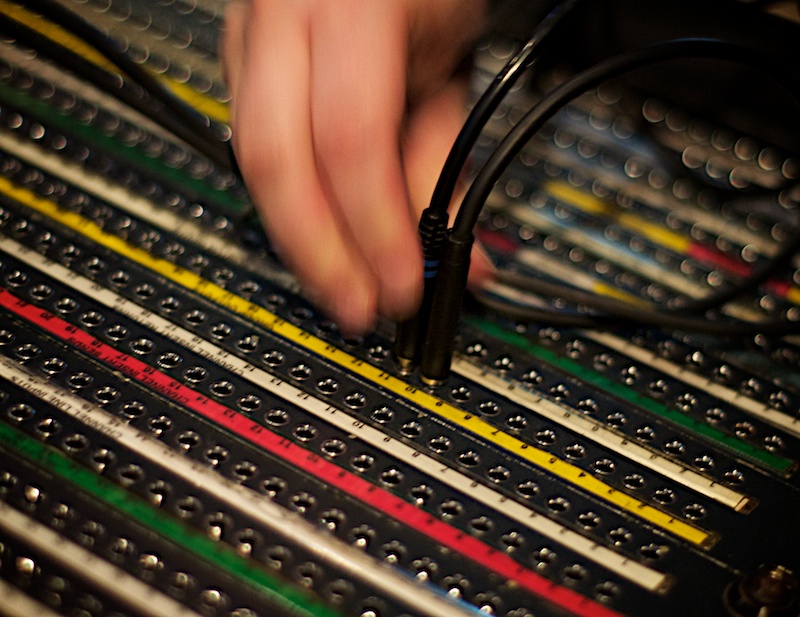Hey Guys!
So todays topic will be on whether having a patchbay is worth it or not. A lot of people i meet that are getting into recording ask this question a lot. So maybe we can shed some light on it.
First off having a patchbay may not be neccessary if you have a simple setup. If your the kind of person that only has a few preamps or something like an mbox then i would suggest that you are fine without one. It would be unneccessary and honestly wouldnt provide you with much benefit. if you dont have any gear such as compressors or effect units then you dont have anything to patch into. Now the only loophole to this would be if you want to run a signal out of your DAW for something like reamping. In that situation a patchbay could help but in most cases small interfaces have a few OUTS on the back for things like that. So if any of these things sound like a setup you have then i would suggest against a patchbay. Save your money and time and buy more preamps and mics.
Now for those people that want to use external gear like compressors and eq's with you DAW then without a doubt a pathbay is definitely neccessary. But the trick is finding out what configuration will work best for you. You have to make sure to wire a configuration that will allow you to do everything you could every need to do (cause wiring them up is a pain but very rewarding when you start using them).
There are 3 major ways to wire a patchbay. Normalled, Half-Normalled, and Non-Normalled. Now each of them have a use so its very rare that you will find a pro studio with just one type of wiring. Most have all 3 so that the options are unlimited so that can patch anything in any order they could ever want.

So now lets talk about how to use each of the 3 types. First off the most popular configuration for hooking up preamps is Normalled. Now the reason for this is that when an insert is Normalled and nothing is plugged in then it will pass the signal from the top to the bottom until something is inserted. So what a lot of people like to do is set the outputs of their preamps and the top row and set the inputs into their interface on the bottom row so that they dont have to plug in any patch cables when getting the audio signal from their preamps to their DAW. Now you can also do this with a Half Normalled bay as well. The only difference is when you split the signal (say you wanted to go to a compressor before your interface) then you would have to make sure to plug the output into the IN on the interface otherwise the connection would not be broken like Normalled. For Half Normalled to be broken the cable must be inserted into the bottom row instead of the top like Normalled. The advantage of Half Normalled though is that it allows you to split inputs into two signals if you desire. For my patchbay at home this is what i use.
Now when it comes time to patch into an effects unit like a compressor, reverb or eq these are best left as Non-Normalled inserts because you dont want the audio to get stuck in a loop between these devices. Honestly there probably wouldnt be that great of a need to have these Normalled or Half-Normalled because you would want to pass the signal through them automatically. You would want to have control as to when then get used.
So hopefully this has shed some light on how to configure your patchbay. Its a tricky thing to understand at first but once you get how they work they arent so bad. Sometimes the best way to see what type of wiring you should do is to google them and read how people use them. When i was configuring mine it took a while to figure out what type of wiring i need for specific gear. But once you figure it out its a pattern that you can keep repeating when adding more gear.
Anyways friends i hope this was informative, and like always go make some great recordings this week! And ill see you on the next one!

